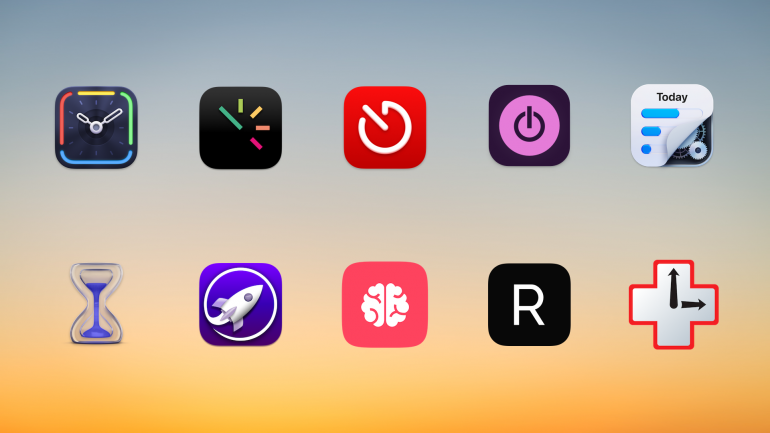-
11 Best Time Tracking Apps for Mac in 2025: A Comprehensive Market Overview

Background image: César Couto; Icons: respective app developersDo you really know how you spend your time? As you look back on a project you’ve just completed, did it take you the three hours you think it did, or was it probably two? Plus, an hour of responding to emails? The only way to know for sure is to track your time by using one of the eleven best Mac time tracking apps we’ve identified below.
Choosing the right app for you depends on what you need — every app is slightly different. While some tally your activities automatically, carefully keeping track of which web pages and documents you spend the most time on, others allow you to log your time manually. Some are ideally suited for freelancers and small businesses, while others are tailored to larger companies.
Read the rest of this buyer’s guide for an overview of the entire Mac time tracking apps in 2025!
-
Case Study: How Toast Design Simplified Their Time Tracking with Timing
Tracking and correctly attributing time spent on projects is vital for accurate cost estimates and managing your team and business, but can be challenging for agencies with several moving parts.
Toast Design needed a time tracking solution that would help them to simplify attribution of project work. Find out why they work with Timing – watch the video, or continue reading.
“Timing is probably the most awesome timing app that I have ever used…really, really simple to set up, simple to configure, simple to convince the team…” says David.
-
How to Log Work Hours for Yourself and Your Team

Image: Christina Morillo
One of the most fundamental yet vital parts of completing any project is accurately logging work hours. Whether working solo or managing a team, keeping track of hours is essential to ensure clients get billed correctly and meet compliance standards.
Fortunately, we live in an age where this process is more efficient and streamlined than ever, and you’re not stuck punching that antiquated time clock.
In this post, we’ll explain how to log work hours and helpful tools you can use to make it as simple as possible. We’ll also go over best practices and common mistakes so you get started on the right foot.
Let’s jump right in.
-
Time Management Matrix: How to Focus on What’s Important

When we’re busy at work or in our personal lives, it’s easy to become overwhelmed by long lists of tasks. We often rush to check items off our to-do list, regardless of their value or timeline. This behavior feels like getting things done, even though not all tasks are the same, and most of them will never help us achieve our goals. But you can get past all that with the Time Management Matrix, which is also called the “Eisenhower Matrix”.
You see, productivity isn’t about working harder or longer – that’s poor time management. Yes, simply working more will cross more items off your list, but it rarely helps create real change in your life. That’s why productivity is more about doing the right things.
How do you work on the right tasks? With prioritization.
Prioritization seems simple, but it’s an advanced skill that few people do well. It’s hard to look at our work objectively and accept that some won’t happen, especially when we’re overwhelmed.
The Time Management Matrix is a powerful tool to organize your work based on importance and urgency. It helps you focus on the tasks that matter most and avoid the ones that don’t help you achieve your goals.
This article explains the Eisenhower Matrix, its advantages, who it’s for, and how it works. Then we offer some tips to use it well.
-
The Dangers of Work Overload and How to Avoid It (for You and Your Team)

Whether you’re the team leader, part of a team, or work for yourself, you’ve probably dealt with work overload. It’s a tricky condition that creeps up in organizations of any size. If work overload is unchecked, it can profoundly impact your people and work products.
In this article, we dive into work overload, its impact, and the steps you can take to avoid it. You can save your team from burnout and continue producing high-quality work with the right processes and tools.
-
Employee Monitoring vs. Time Tracking: How to Help Your Team Do Their Best Work

According to a survey by MIT, 34% of the US workforce has shifted to some type of remote work arrangement. The COVID-19 pandemic didn’t start the remote work trend, but it certainly accelerated it. For many businesses, the only options were to transition to remote work or close down.
This shift presents a challenge for some employers and team leaders. Where once they could monitor their team’s progress by simply roaming the office and having casual conversations, now they need to enlist digital tools to collect data on how their teams spend their time.
Because of this shift, some people are fearful of personal data security. We know the benefits of having our data harvested and analyzed, but we’re also aware of the risks. If a company doesn’t handle our data appropriately, we become exposed to abuse and privacy violations. The potential dangers make many people wary of digital tracking tools that monitor our actions, what we create, and the types of information we access.
As an employer or team leader, you naturally want information regarding the activities and productivity of your team. You need that data to make intelligent business decisions. But how much is too much? What are the appropriate types of information to track? Like many employers, you’re probably wrestling with these questions and more.
There are two main options for studying your team’s work and helping them do their best: employee monitoring and time tracking. This article explains these options and why traditional employee monitoring is too heavy-handed for modern workers.
Read More… -
Why Time Tracking is Critical for Remote Teams

Remote work is here to stay. While some companies still resist this new cultural trend, many embrace it. According to a study by The New York Times, 68% of employers “allow workers to telecommute as needed.” This trend was picking up speed before the pandemic, but COVID-19 seriously boosted it.
It’s no surprise that workers are happier and more productive when they control where and when they work. Some work better in the early hours before the rest of the world wakes up. Others prefer to work in the evening. Some sit at their cozy, in-home office, while others tour their city, visiting new cafes, parks, and libraries.
Remote work is popular among families, as well. Childcare costs are more expensive than ever, so working from home while kids play can be a significant income bump.
As remote work becomes mainstream, organizations must implement new workflows, systems, and tools to support this work style. They are finding new ways to manage their changing workforce, and one vital tool of this transition is time tracking.
We’ve discussed the benefits of time tracking in the past and the importance of using time tracking for teams. In this article, we want to focus on remote teams and the benefits time tracking offers for businesses and people.
Read More… -
Key Features and Benefits You Need in a Team Time Tracking App

You’ve decided that time tracking is right for your team due to the potential productivity and work/life balance benefits. Now you’re ready to get started.
You’ll need a team time tracking app to track time accurately and reliably with as little disruption to your business and team as possible. While teams previously used paper forms and punched clocks to record time, those methods have become outdated and inefficient. We’re in the digital age; you need a powerful app.
A proper time tracking tool is more than just a stopwatch. It’s easy to use, records detailed information about individual activities, and keeps private data private. It lets teams work their best and administrators manage effectively.
But which time tracking app should you choose? Admittedly, several are available, so you must search for the right app for your organization. Consider your options carefully because this tool can profoundly impact your team’s performance.
This article lists the most important features you should look for in a potential time tracking app. Don’t settle on a tool until it meets these criteria.
(Before you dive in, consider browsing our complete guide on team time tracking. It’s a great primer on tracking the time of a group, including how time tracking works, the benefits you can get from it, and how to implement it in your team.)
Read More… -
How to Introduce Time Tracking to Your Team

You’ve decided to start tracking your team’s time. You understand the benefits of time tracking and believe it’s right for your team and organization. Your next step is to get your team on board and kick off the time tracking program.
Time tracking is a powerful asset for teams of all sizes, including in-house employees and teams of outsourced freelancers. Time tracking offers better productivity, accountability among team members, faster work production, and accurate billing when used properly.
Some team members are naturally suspicious of team time tracking. This hesitancy is often due to preconceived notions of what time tracking is and how it works. They may assume that you’ll use it to force them to work unreasonably hard or fast. Obviously, this isn’t your intent, so thoughtfully introducing your time tracking program to your team is essential. You can soothe many of their fears with the right information.
Many teams welcome time tracking as a powerful tool to improve productivity and gain insight into their work. This article offers a step-by-step guide to introducing time tracking to your team. Then we illuminate some common concerns team members make about time tracking and how you can address them.
Time tracking offers better productivity, more accountability among team members, faster work production, and accurate billing when used properly Share on X Read More… -
The Complete Guide to Team Time Tracking

As a team leader, you want your team members to be as productive as possible to make the team (and your overall organization) successful. You also want them to be happy, satisfied workers who don’t struggle with burnout or underappreciation. You can manage both of these concerns with team time tracking.
At one point, we used time tracking only to calculate salaries and paid time off. But in the age of data, time tracking offers numerous additional benefits – for businesses and individual employees. To be competitive, you should take advantage of this powerful technique
In this guide on team time tracking, we explain what it is, how it works, the benefits you can get from it, and how to implement it in your team.
As a team leader, you want your team members to be productive, happy, and satisfied without struggling with burnout or underappreciation. You can manage all of that with team time tracking. Share on X
